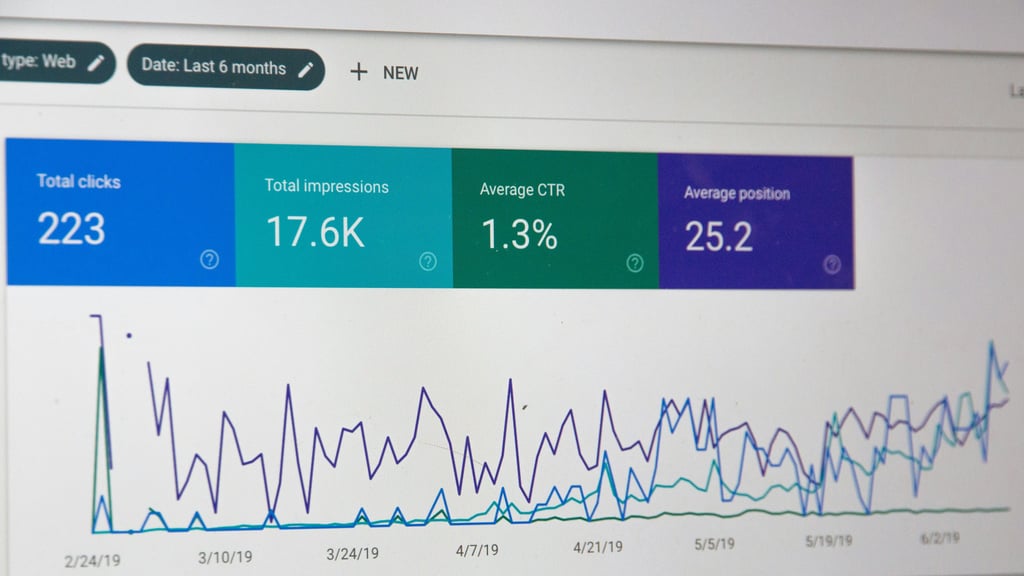Local SEO Checklist for Small Businesses
If you've just gotten into setting up local SEO for your business, this checklist will help you walk through all the necessary steps in order.
Danish Javed
3/8/20254 min read


Local SEO is a game-changer for small businesses aiming to attract nearby customers. With more people searching for products and services "near me," optimizing your online presence for local search is no longer optional—it’s essential.
Local SEO helps you stand out in local search results, drives foot traffic to your store, and builds trust with your community. Whether you’re a coffee shop, a plumber, or a boutique, this checklist will guide you through the key steps to improve your local SEO and grow your business. Let’s get started.
1. Claim and Optimize Your Google Business Profile
Your Google Business Profile (GBP) is the cornerstone of your local SEO strategy. It’s the first thing potential customers see when they search for your business or services in your area. If you haven’t already, claim your GBP and take control of how your business appears online.
Start by ensuring your business name, address, and phone number (NAP) are accurate and consistent. Add high-quality photos that showcase your products, services, and location to make your profile visually appealing. Choose the most relevant business categories to help Google understand what you offer.
Next, write a compelling business description that includes relevant keywords and highlights what makes your business unique. Don’t forget to enable messaging and reviews, as these features encourage customer interaction and build credibility. By optimizing your GBP, you’ll increase your chances of appearing in local search results and Google’s coveted "Local Pack."
2. Optimize for Local Keywords
To attract customers in your area, you need to speak their language—literally. Local keywords are the phrases potential customers use when searching for businesses like yours nearby. Start by researching keywords that include your location, such as “bakery in [City]” or “dentist near [Neighborhood].” Tools like Google Keyword Planner or Ubersuggest can help you identify the most relevant terms.
Once you’ve identified your local keywords, incorporate them strategically into your website’s meta titles, descriptions, and content. If you serve multiple locations, consider creating dedicated landing pages for each area. For example, a “Plumber in [City A]” page and a “Plumber in [City B]” page can help you rank for both locations. By optimizing for local keywords, you’ll make it easier for nearby customers to find you.
3. Build Local Citations and Ensure NAP Consistency
Local citations—mentions of your business name, address, and phone number (NAP) on other websites—are a critical factor in local SEO. They help search engines verify your business’s legitimacy and improve your local search rankings. Start by listing your business on reputable directories like Yelp, Yellow Pages, and industry-specific platforms.
Consistency is key. Ensure your NAP information is identical across all platforms, including your website, social media profiles, and directories. Inconsistent or incorrect information can confuse both customers and search engines, hurting your rankings. Use tools like Moz Local or BrightLocal to audit your citations and fix any discrepancies. By building accurate and consistent citations, you’ll strengthen your local SEO foundation and boost your visibility.
4. Encourage and Manage Online Reviews
Online reviews are more than just feedback—they’re a powerful tool for building trust and improving your local SEO. Positive reviews signal to search engines that your business is reputable, helping you rank higher in local search results. Start by asking satisfied customers to leave reviews on your Google Business Profile and other relevant platforms like Yelp or Facebook.
Make it easy for customers by providing direct links to your review pages. Once reviews start coming in, respond to them promptly and professionally. Thank customers for positive feedback and address any negative reviews with empathy and a willingness to resolve issues. This not only improves your reputation but also shows potential customers that you value their experience. By actively managing reviews, you’ll build credibility and strengthen your local SEO efforts.
5. Optimize Your Website for Local SEO
Your website is the hub of your online presence, and optimizing it for local SEO is essential to attract nearby customers. Start by ensuring your NAP information is prominently displayed, ideally in the footer or on a dedicated contact page. Embed a Google Map on your contact page to make it easy for visitors to find your location.
Use schema markup to provide search engines with structured data about your business, such as your address, hours, and services. This helps search engines understand and display your information more effectively. Additionally, make sure your website is mobile-friendly and loads quickly, as these factors significantly impact user experience and search rankings. By optimizing your website for local SEO, you’ll create a seamless experience for both search engines and potential customers.
6. Leverage Local Content and Social Media
Creating content that resonates with your local audience is a powerful way to boost your visibility and connect with your community. Write blog posts about local events, news, or topics that matter to your customers. For example, a restaurant could share a guide to the best dining spots in town, or a gym could post about local fitness challenges.
Don’t forget to promote your local content on social media. Share posts about community involvement, special offers, or behind-the-scenes glimpses of your business. Engage with your followers by responding to comments and participating in local conversations.
Platforms like Facebook, Instagram, and LinkedIn can help you build a loyal local following. By leveraging local content and social media, you’ll strengthen your online presence and foster meaningful connections with your audience.
Local SEO in a Nutshell
Local SEO is a must for small businesses looking to attract nearby customers and stand out in a competitive market. By following this checklist—claiming and optimizing your Google Business Profile, targeting local keywords, building citations, managing reviews, optimizing your website, and leveraging local content—you’ll set your business up for success.
Remember, local SEO is an ongoing process, so monitor your progress and adapt your strategy as needed. Start implementing these steps today, and watch your business grow in both visibility and customer engagement. Your community is waiting to find you—make it easy for them!


Comprehensive digital solutions for small businesses.
Contact
Book Call
© 2025. All rights reserved.
